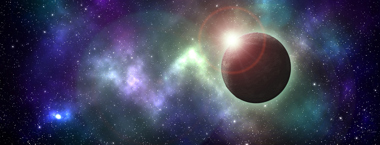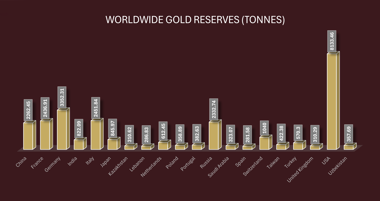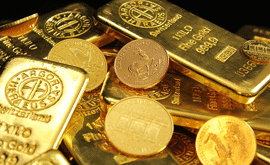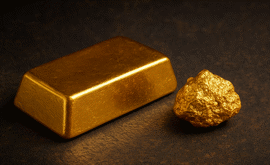Where Does Gold Come From?
After mystifying us all for thousands of years, we now have the answers as to how this most precious of metals came to be. Gold comes from outer space.
Key takeaways
- Gold's origins have long puzzled humanity, with its value and scarcity prompting questions about where it comes from.
- Recent astronomical discoveries have revealed that gold originated in outer space, from the collision of neutron stars.
- Gold is found on Earth in various locations, including gold mines, riverbeds, and quartz veins within rocks, formed through geological processes.
- A large amount of Earth's gold may have sunk to the ocean floor, remaining largely inaccessible.
- The exact amount of gold on Earth remains uncertain, with estimates suggesting around 244,000 tons to date.
- The scarcity and intrinsic value of gold contribute to its enduring value.
How is gold formed?
Just like the ‘big bang’, everything in the history of the universe has collided at some point, and stars are no different. Inside massive stars, nuclear fusion is churning out energy until the star dies, and the centre of the star collapses, forcing protons and electrons to become a neutron, creating a neutron star.
Astronomers have recently realised that the collision of these neutron stars are especially interesting when it comes to the formation of certain metals, such as gold.
Around a decade ago, astronomers realised that gravitational waves (ripples in space-time caused by violent processes), produced by two neutron stars coming into collision, are the reason that gold exists here on earth today. The explosion caused by one of these collisions is a thousand times brighter than a typical nova so has been dubbed a ‘kilonova’, and this can splinter and produce heavy elements including gold. These gold particles were likely then mixed up in the swell of gas and dust that went on to form the Earth.
The first time astronomers witnessed a kilonova was in 2017. Using both optical and electromagnetic telescopes, scientists witnessed two neutron stars, produced by gravitational waves that originated 140 million light-years from earth, collide with one another in real-time.
Despite being a theory for some time, scientists now have proof that gold really is created in space. In the meantime, this means that we now know that the gold in the bars and coins we buy were once forged from the collision of two neutron stars that happened long before the creation of the solar system. This then sank to the Earth’s core until eventually, asteroids crashed through the earth’s crust, causing the gold to surface.
Where would you find gold on Earth?
Gold is found today in almost every continent of the world, in rock ores. However, as gold is dense, experts suspect that most of it may have sunk to the bottom of the ocean, and there it remains.
Gold is found in various locations, including gold mines where they extract and process ores, and in rivers and streams through due to natural erosion. Gold particles often collect in river valleys and floodplains or are found in quartz veins or lodes within rocks, formed by geological processes. Placer deposits, which are concentrations of gold particles concentrated by water flow, can be found in ancient riverbeds or beaches. Some gold is deep underground and needs extensive mining to reach. It is also estimated that there is still eight times more gold under the oceans than has ever been mined in the history of humanity but has so far been inaccessible or too expensive to mine.
How much gold is there on Earth?
The World Gold Council estimates that around 244,000 tons of gold has been discovered to date, including 187,000 tons of mined gold and 57,000 tons of reserves that have yet to be unearthed. However, until every ounce of gold is extracted from the Earth and every gold artifact, coin, or bar is accounted for, we cannot be completely certain of the exact amount of gold there is in the world. There are also significant portions of gold still undiscovered, lost to history, or mixed with other metals.
It is believed that all the gold ever mined could fit into around 3.42 Olympic-sized swimming pools. This could also be visualised as a single cube, with each side measuring about 20 metres, or 67ft, in length.
Gold’s scarcity and intrinsic value are exactly what make it so highly prized, unlike fiat currencies, which can be printed endlessly, ensuring gold's lasting value and resistance to devaluation.
The chart above provides a comparison of the UK's gold reserves with those of other major global holders of gold, according to information from the World Gold Council, as of May 2024. For a more in depth and interactive article please read global gold reserves.
This blog represents one person’s opinion only. Please note, gold and silver prices may go down as well as up. Atkinsons Bullion & Coins accepts no responsibility for any losses based on information we have provided. We do not offer investment advice. Please carry out your own research before making an investment decision.














